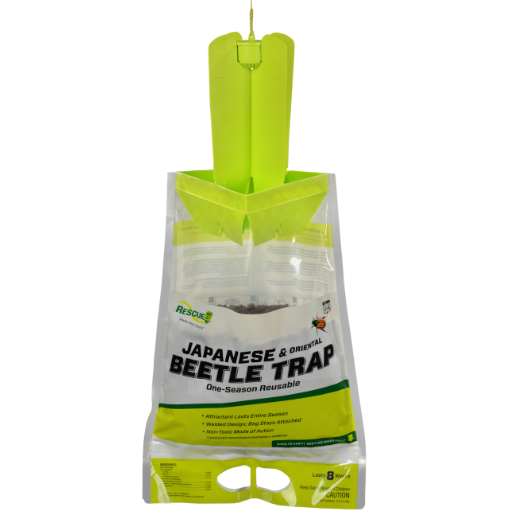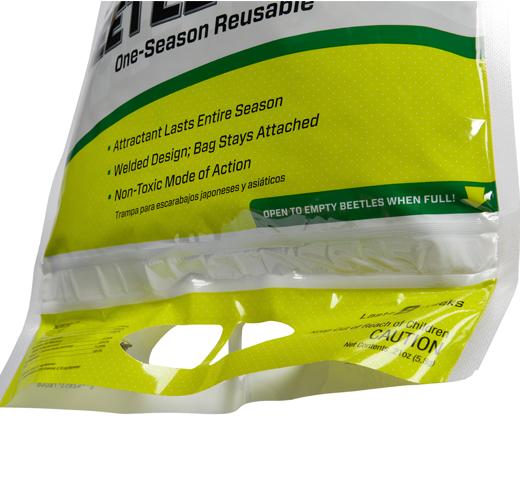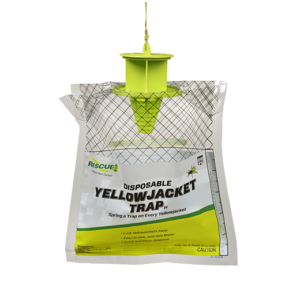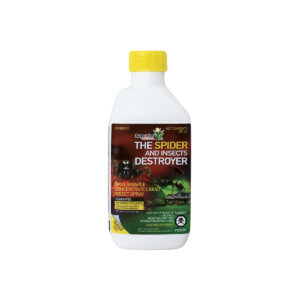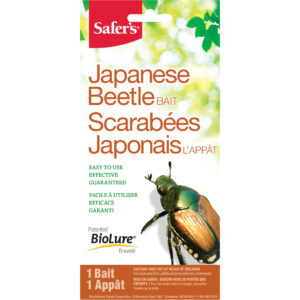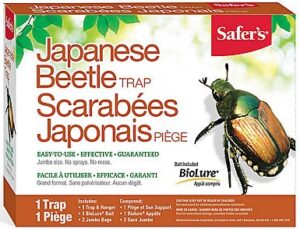What it Catches
This trap catches the Japanese beetle, a destructive garden pest that infests and destroys over 300 varieties of ornamental plants. Also catches the Oriental beetle, which feeds on roots of turf grass, nursery stock, greenhouse ornamental crops and fruit.
How It Works
The trap uses floral scents proven to be a natural attractant, along with the beetle’s natural sex attractant. The trap uses a scientifically designed method to control the release of these natural floral and sex attractants to lure both male and female beetles to the trap. The convenient plastic cone design prevents the user from having to handle the actual attractants.
Unique Features & Benefits
- Central attractant placement disperses pheromone in all directions
- New easy-lock bottom allows trap to be emptied and reused
- Catch capacity is four times larger than the competition
- Double-layer nylon bag is highly durable
- An all-in-one trap, with no accessories to buy
- Bright green panels and the bag are welded together to ensure the bag stays attached
What Kills the Insects?
Once attracted by the pheromone scent, Japanese beetles fly into the large yellow panels of the trap and are stunned on impact. They then fall into the attached bag. Once inside, they cannot fly out of the trap.
Where & How to Use
Where it’s used
The trap should be placed at least 30 feet from ornamental plants, to lure beetles away from the area where they are creating damage. Hang the trap by its twist-tie hanger from a post or stake, four feet above the ground and away from the desired foliage. During heavy rain or wind, the trap should be removed to a protected location.
When it’s used
Infestation of the adult Japanese beetles occurs mid-June in the southern part of the United States, and around July 4 in the Northeastern and Upper Midwestern part of the U.S

